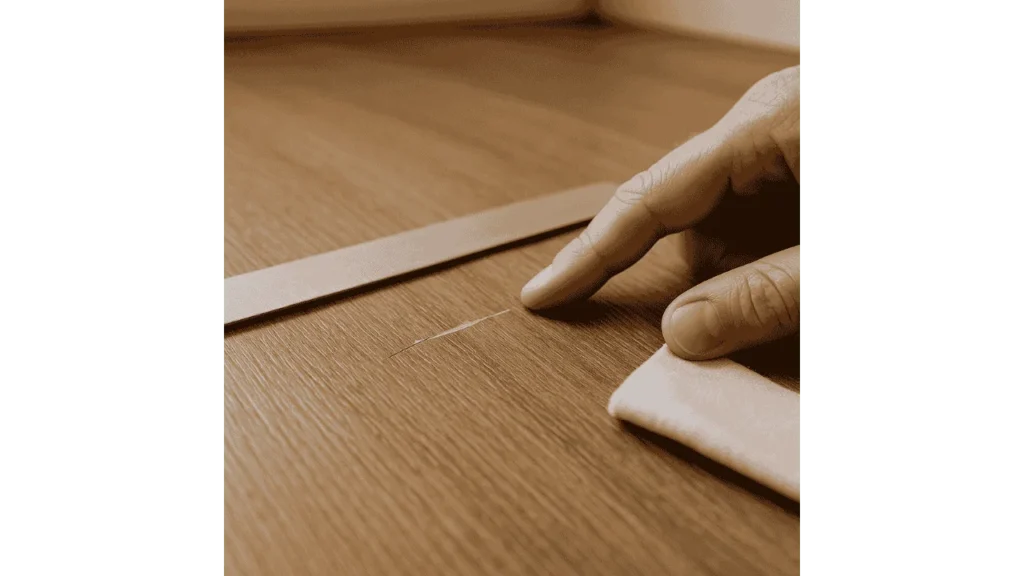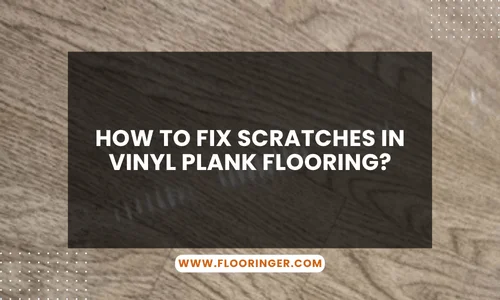Vinyl plank flooring holds up impressively well in busy homes, but scratches can still sneak in, especially in high-traffic spots or rooms with active pets. The good news is, most of these scratches can be fixed at home without replacing the entire floor. I’ve dealt with my fair share of marks, everything from chair scuffs to pet claws, and I’ve learned which fixes actually work and which are just a waste of time. In this post, you’ll learn exactly how to assess and repair scratches so your vinyl stays looking great for years.

Know What Your Warranty Covers
Before reaching for any tools or cleaners, take a moment to read your flooring’s warranty. Many manufacturers clearly spell out which products or repair methods are allowed. I once made the mistake of using an off-brand filler that actually voided the coverage on a small hallway section. Some brands even offer their own repair kits, which can be a smart starting point if you’re unsure how to proceed.
Prevention Always Pays Off
While today’s vinyl planks are designed to resist wear, they’re not invincible. Using felt pads under furniture legs, rugs in doorways, and a no-shoes policy in sensitive areas can drastically reduce the number of scratches you’ll deal with over time. I make it a habit to clean with a microfiber mop every few days, which helps remove small grit particles that act like sandpaper underfoot.
Learn More: What Should You Put Under Vinyl Flooring
First, Assess the Scratch Depth
The repair method depends entirely on how deep the scratch is. If you’re only seeing faint lines or surface-level scuffs, the solution can be quick and easy. But deeper scratches that cut into the vinyl wear layer or down into the core may call for a more involved fix, or even replacing a plank. A careful inspection under good lighting will tell you what you’re dealing with.
Steps to Follow Thoroughly
Buff Out Light Surface Scuffs
Light scratches are usually the easiest to handle. Mix warm water with a drop of mild dish soap, then gently rub the area with a soft cloth. If that doesn’t do the trick, a melamine sponge, like a Magic Eraser, can lift stubborn marks without damaging the vinyl. To finish, apply a layer of vinyl polish or restorer. According to Daniel Weindorf, a flooring specialist with over two decades of experience,
“Using a vinyl restorer not only revives shine but adds a protective barrier that wards off future surface damage.”
Blend Away Medium Scratches
If the scratch feels like a groove under your finger, it likely needs a color-matching filler. Most home improvement stores carry vinyl floor repair kits that include putty, applicators, and sometimes a finish coat. After applying the filler, a gentle sand with ultra-fine sandpaper can help smooth the area before sealing. Always test in an inconspicuous spot first to make sure the finish matches your flooring.
Repair or Replace Deep Gouges
Severe damage, like deep gouges or cracked planks, can’t always be covered up. In these cases, replacement is usually your best bet. If you have click-lock vinyl, individual planks can often be swapped out without dismantling the entire floor. For glue-down flooring, it takes a bit more precision. You’ll need to carefully cut away the damaged area and install a new patch, ensuring the seam is tightly bonded. As interior designer Melissa Antonelli puts it,
“Trying to disguise a gouged plank rarely works, replacement gives a cleaner, longer-lasting result.”
Final Takeaways
Fixing scratches in vinyl plank flooring is absolutely doable with the right approach. The trick is knowing how deep the damage goes and acting accordingly. Light scuffs just need a buff and polish, while medium marks may require filler. Deep scratches? Sometimes you’re better off replacing that section entirely. Personally, I always keep a small repair kit in the utility closet, it’s saved my floor more times than I can count. A bit of care now goes a long way toward keeping your vinyl floors looking fresh, stylish, and scratch-free for the long haul.
